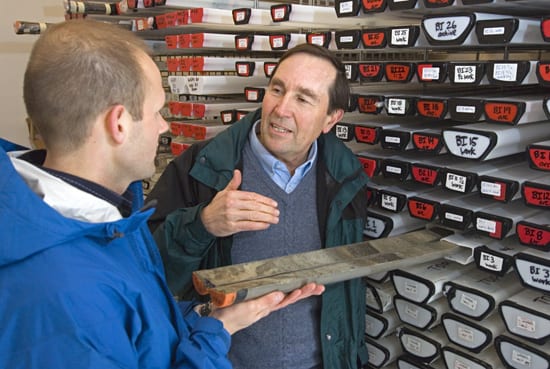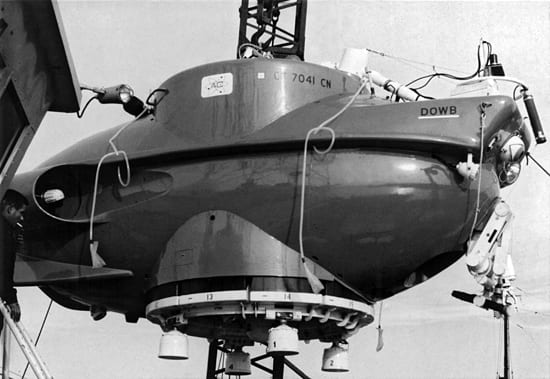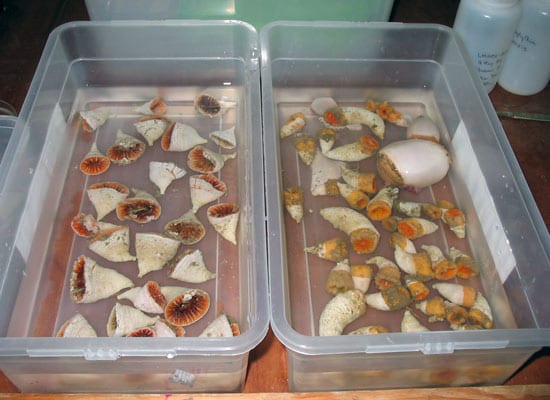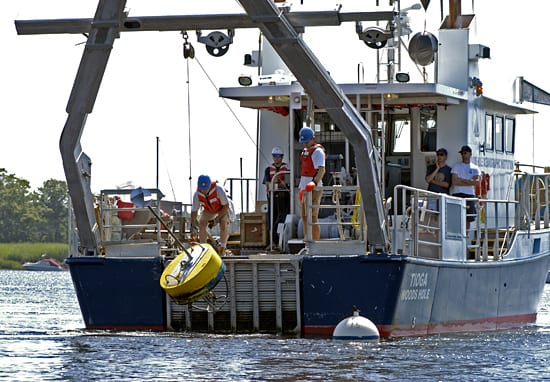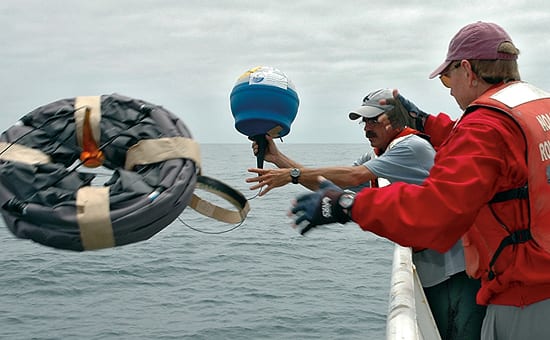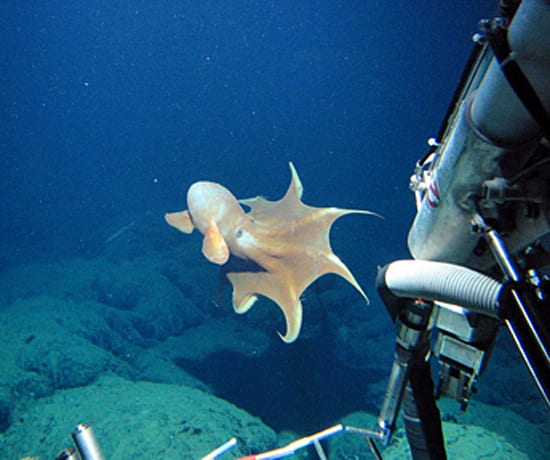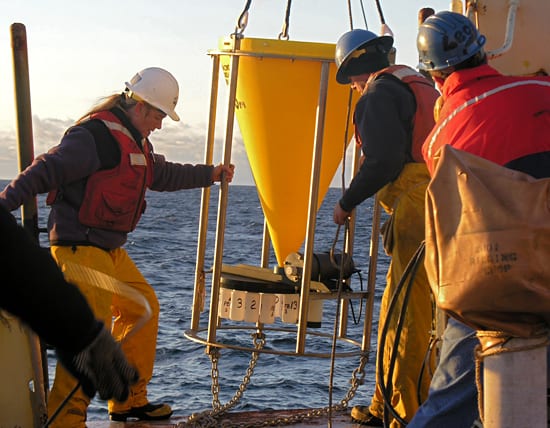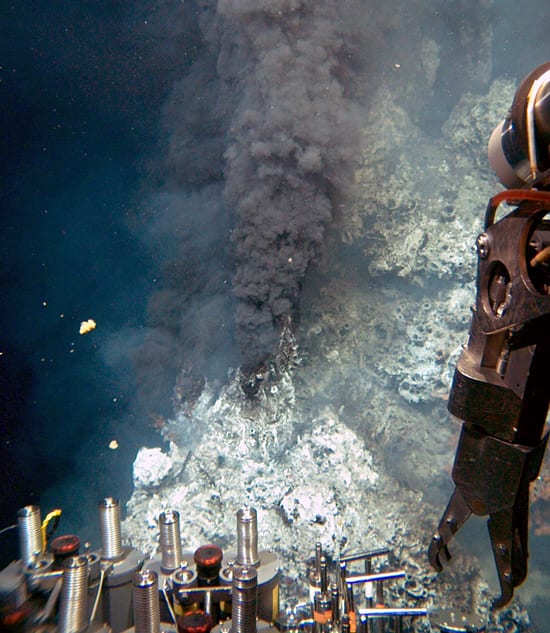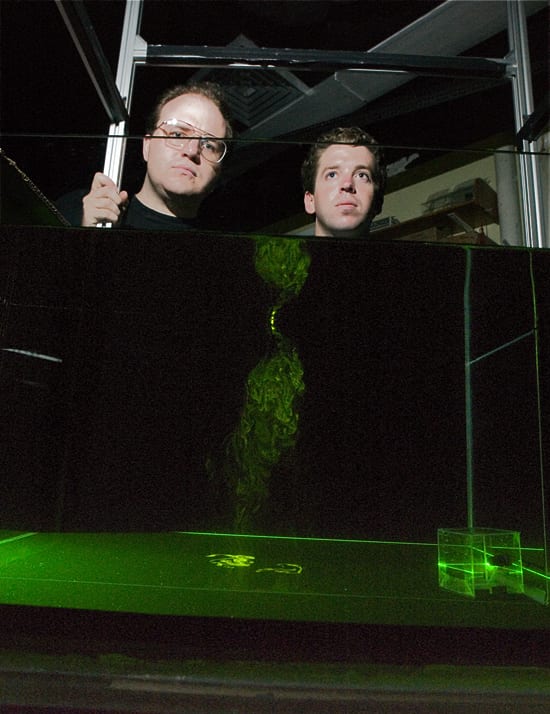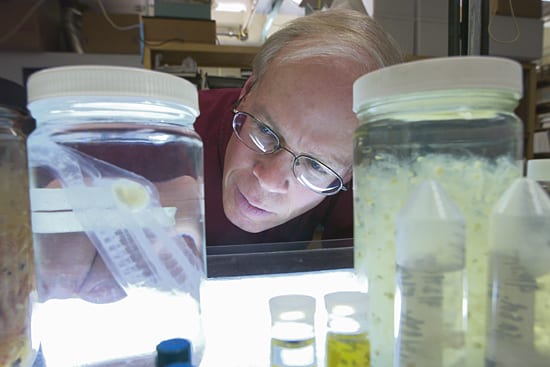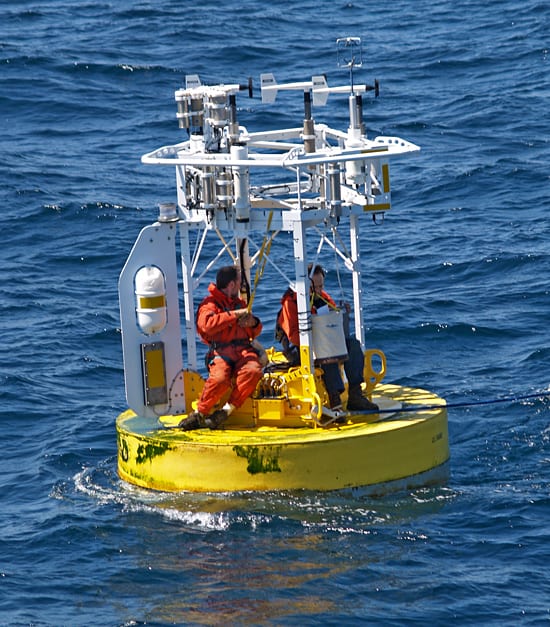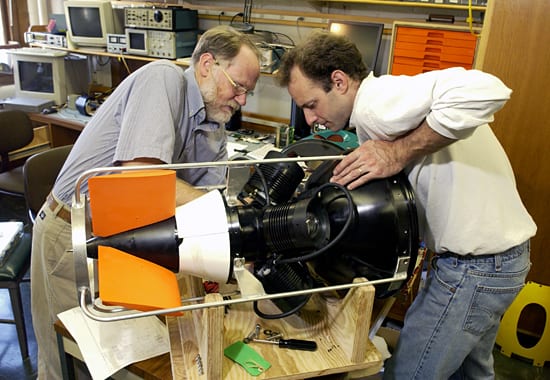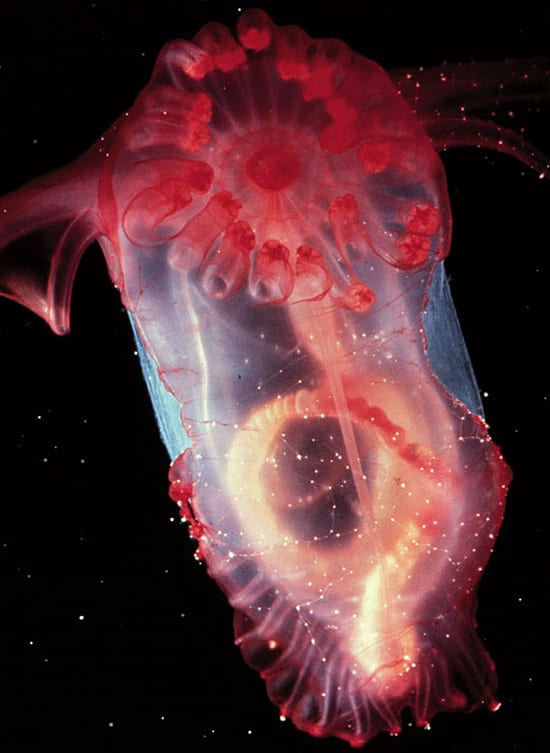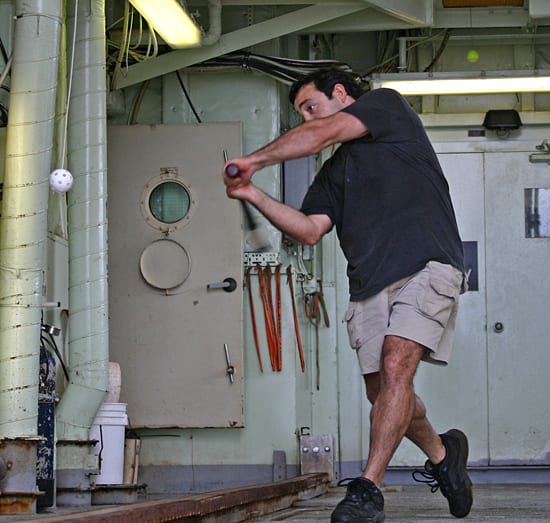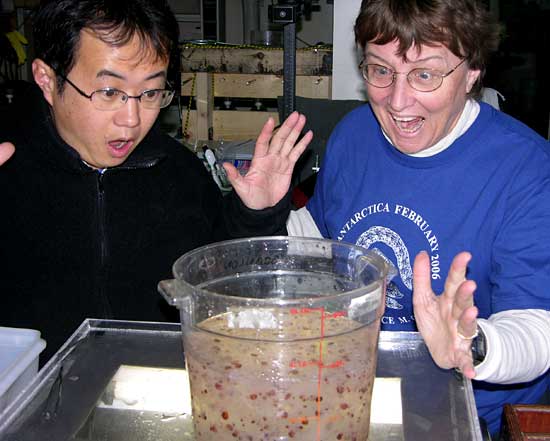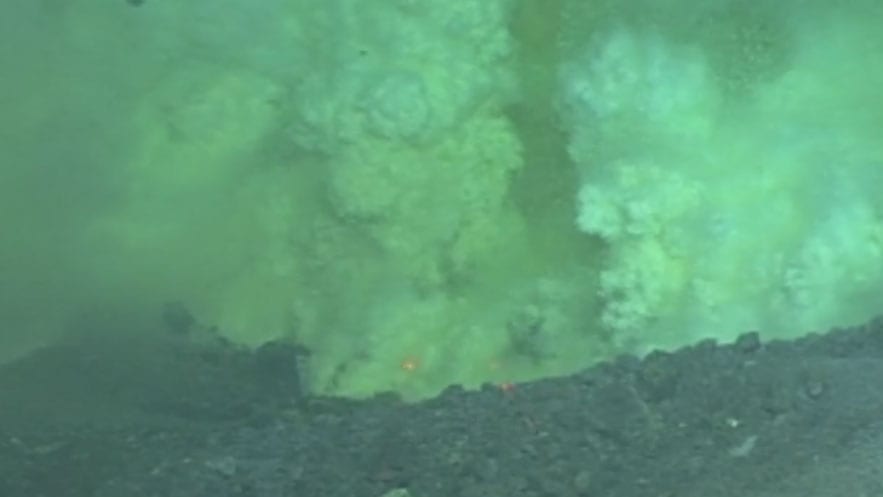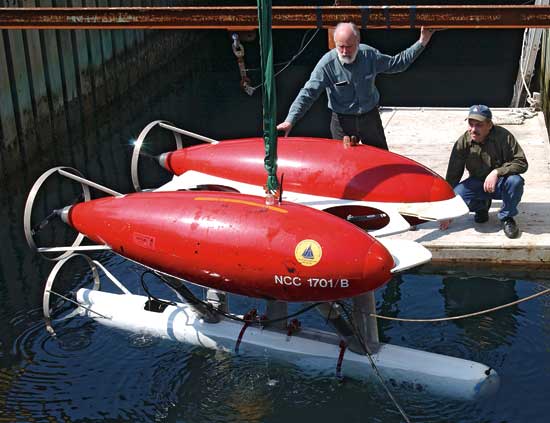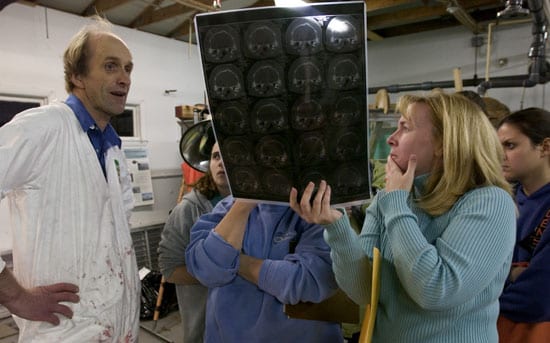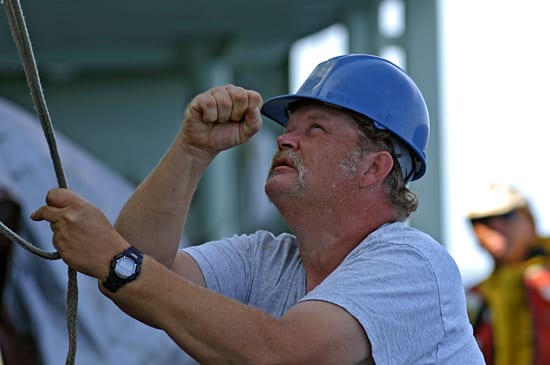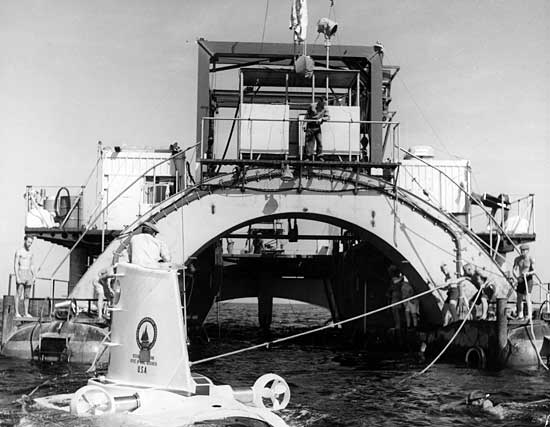Multimedia Items
The Old Days
Sybil Campbell worked at WHOI from 1954 to 1960 as a research assistant with geochemist Vaughan Bowen. Bowen brought nuclear studies to WHOI, with research projects to detect the presence…
Read MoreMuddy Mysteries
MIT/WHOI Joint Program student Jon Woodruff (left) and Senior Scientist Don Anderson examine a sediment core sample from the Caribbean island of Saint Kitts for a study using coastal flood deposits…
Read MoreDinner Time
The most abundant zooplankton in Antarctic waters are Antarctic krill (Euphausia superba), a focus of Dive and Discover Expedition 10. These two-inch long pink crustaceans are the main food source…
Read MoreTo the Rescue
Deep Ocean Work Boat (DOWB), launched from R/V Lulu, was used to search for Alvin after it sank in late 1968 south of Nantucket when a cable on Alvin’s launch…
Read MoreCorals Under Ice
Corals Under Ice
Up It Comes
Stern view of the RV Tioga during a mooring recovery on the Merrimack River. (Photo by James Kent, Woods Hole Oceanographic Institution)
Read MoreOver the Side
WHOI’s Paul Bouchard and NOAA Teacher At Sea, Eric Heltzel, launch adrifter during a 2005 cruise. Drifters are used to track surface currents and can be launched from ships or…
Read MoreHello There!
An octopus comes to see what the submersible Alvin is doing during Dive and Discover Expedition 9 to the Galapagos Rift in 2005. (Photo by Bruce Strickrott, DSV Alvin pilot,…
Read MoreCatching Carbon
Deploying a sediment trap from R/V Oceanus in the Gulf of Maine. The instrument collects sinking particles on a pre-programmed schedule and measures the export of carbon and other geochemical…
Read MoreHoly Smokes!
Chimney-like structures called black smokers emit superheated water full of minerals from the seafloor. First discovered in 1979 in the eastern Pacific, they have since been found around the world,…
Read MoreTo Dye For
Assistant Scientist Jason Goodman and Summer Student Fellow Daniel Carlson conduct a dye experiment in the Geophysical Fluid Dynamics Lab at the Coastal Research Laboratory. (Photo by Tom Kleindinst, Woods…
Read MoreJars of Jellies
Biologist Larry Madin studies jellies, collected at sea and preserved in jars, in his lab. Gelantinous zooplankton (jellyfish to most of us), are a major link in the oceanic food…
Read MoreRepairs at Sea
Technicians repaired meteorological sensors, damaged by a ship strike, on a Gulf Stream buoy in April. The buoy is the first surface mooring in deep water to survive the wind,…
Read MoreEasy Does It
Rob Goldsborough and Greg Packard work on a specialized REMUS. Digital still cameras with lights were installed on the autonomous underwater vehicle to find cracks on the inside of an aqueduct supplying…
Read MorePretty in Pink
The sea-dwelling sea cucumber, Enypniastes eximia, feeds on sand and mud, then swims gracefully off the bottom, perhaps to avoid predators. (Photo by Laurence Madin, Woods Hole Ocenographic Institution)
Read MoreBatter Up!
DSV Alvin pilot Anthony Tarantino takes a whack at a Whiffle ball during some rare down time aboard the R/V Atlantis. (Photo by Amy Nevala, Woods Hole Oceanographic Institution)
Read MoreWe Got ‘Em!
Biologists Jun Nishikawa from the University of Tokyo and Patricia Kremer from the University of Connecticut react with exaggerated delight to finding nearly 13 liters of their target animals, salps,…
Read MoreJason versus the Volcano
WHOI expedition leader Will Sellers talks about the adventure of deep-sea research at an erupting underwater volcano. Originally published online January 1, 2006
Read MoreTime for a Dunk
Al Bradley (left) and Dana Yoerger, two of the inventors of the Autonomous Benthic Explorer (ABE), dunked the autonomous underwater vehicle in the test well at the WHOI dock before…
Read MoreIt’s All in the Image
Marine biologist Michael Moore and CT Technician Julie Arruda discuss CT images of a marine mammal with students. A new necropsy and scanner facility enhance the team’s ability to handle…
Read MoreConnect the Dots
Polyps of the star coral, montrastrea cavernosa, with a green algae at its center, used as a source of food. Star coral are common in the tropical Atlantic Ocean and…
Read MoreStop!
Research vessel Atlantis Bosun Wayne Bailey signals to a crew member during ship operations for the Galápagos Rift Expedition in May and June 2005. Crew members work closely with scientists…
Read MorePiece by Piece
Early image of the catamaran Lulu, the first support ship for the submersible Alvin (in foreground), circa 1964. The 105-foot Lulu was built in Woods Hole from surplus minesweeping pontoons and…
Read More

